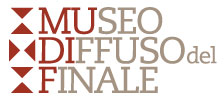The courthouse in Finalborgo
(13th – 19th century)
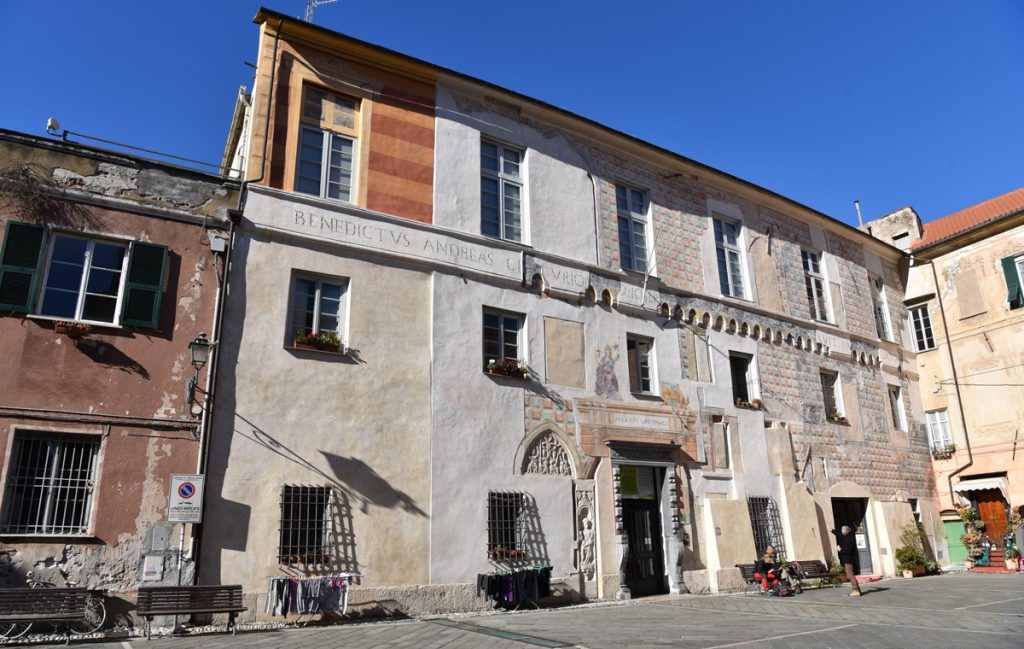

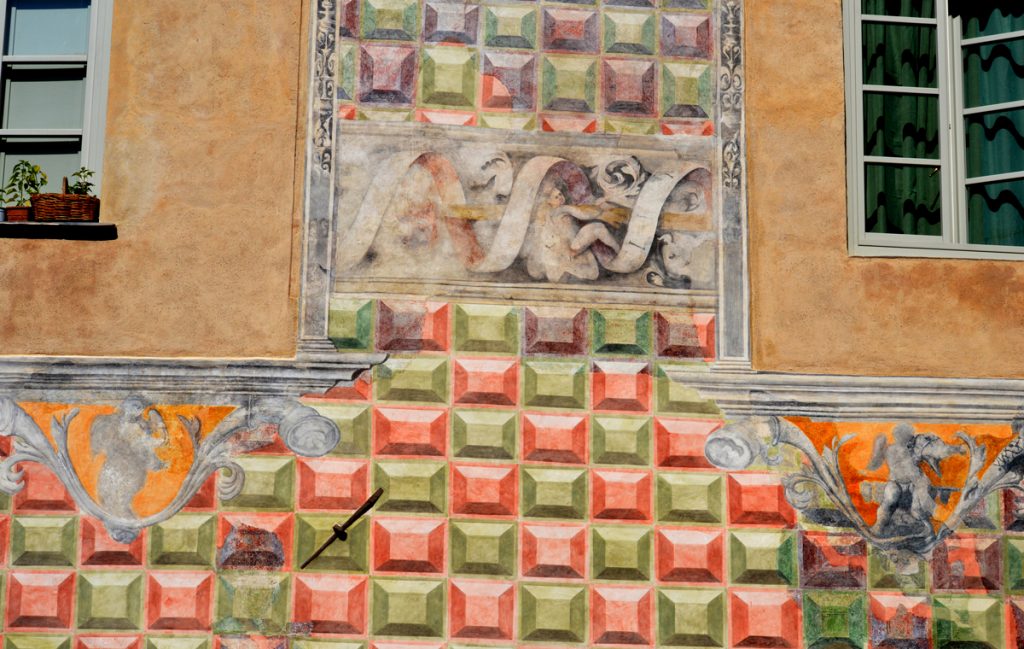
A place of power for the marquises of Finale
Since the middle ages the courthouse in Finalborgo is remembered as the “building where justice was administrated” by the Del Carretto marquises. This building represents a beautiful example of power architecture, that, until a few years ago, had maintained for centuries its original function.
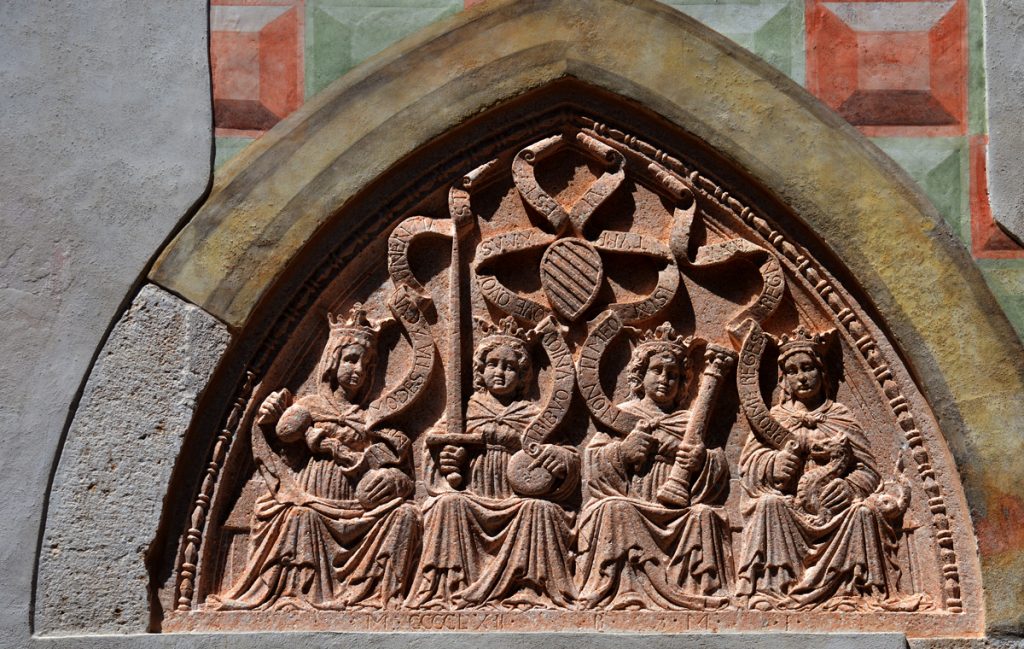
The bezel in the façade that depicts “the four cardinal virtues” was ordered by Giovanni I Del Carretto as part of the reconstruction in 1462.
During the Renaissance the façade was decorated with frescos depicting false ashlars with polychrome “diamond points”.
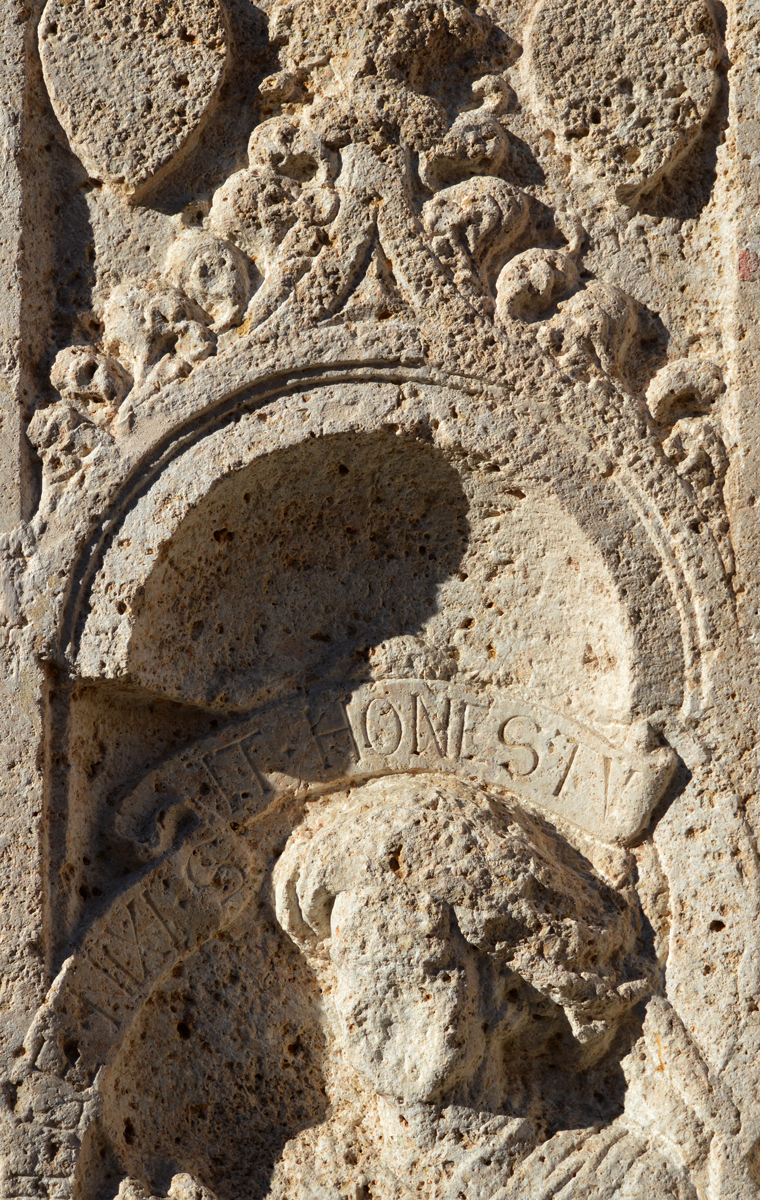

MORE INFORMATION – The courthouse in Finalborgo
The courthouse is an important medieval building that was constructed in the northern end of the town of Finale. It stood at the foot of the hill where the Becchignolo tower once rose, to which the town walls were linked and then later it was incorporated in the Spanish Castel San Giovanni fortress. The building was mentioned, as the seat of judicial and administrative power of the Finale marquises, for the first time in 1311 and extraordinarily it maintained its function up until only a few years ago.
In the square in front of the building, archaeological investigations have demonstrated how this area had already been occupied before the foundation of “Burgus Finarii” at the end of the 12th century. The excavations brought to light a building with stone walls, dated to the end of the 10th century, that was in turn built on a previous early medieval phase.
After the removal of the 19th century plastering, hanging arches on the first floor came to light and these could be part of the original medieval building that probably dates back to the 13th century.
Guglielmo Casatroia in 1462, by order of Giovanni I Del Carretto, commissioned master Giorgio Molinaro “de Plebe” to restore the building. The work included the creation of two vaulted rooms on the ground floor, destined to become the treasury and the chapter room. On the first floor, a few rooms and halls with fireplaces and, in the mezzanine floor, a latrine were planned. Furthermore, five windows with slender columns were set and can still be seen today.
Following the model of many medieval buildings, a staircase, with Finale stone columns, that led to a loggia on the first floor, was built on the left side of the building and still exists today.
The Finale Stone bezel with the “four cardinal virtues” and the pillar with the image of a judge are also dated to 1462 and are attributable to an unknown Lombard sculptor that was active in Finale at the time.
Between the end of the 15th century and the beginning of the 16th century the main façade and the left side of the building were decorated with a polychrome false ashlar “truncated diamond” motif that is interrupted by bands with leaf decorations. In the lower band, a ribbon wrapped around by garlands is held by putti and has writing that alludes to strength and law.
During the Spanish domination (1602-1707) the building was the residence of the governors of Finale and in 1666 young Margaret of Spain stayed there during her voyage to the imperial court of Vienna.
In 1789, the Genoese governor Benedetto Andrea Centurione added parts to the building and had the façade rebuilt, as confirmed by the presence of a long frieze that is partially preserved, by opening the current wide square with the demolition of some of the houses that faced the square.
Moreover, the current portal was opened, in which a 16th century black stone fireplace, with an architrave that was richly decorated with military motifs, originally from Gavone castle, was placed. The allegorical painted decoration that surrounds the fireplace dates back to the Napoleonic period.
In the background of the square there is palazzo Cremata to the east and palazzo Arnaldi to the west, with an elegant mid 1800s stucco decoration.
After the recent closure of the Courthouse, the building became the seat of theatrical performances and cultural events, with a cultural itinerary that reminds of the precedent judicial function of the building.
HOW TO REACH
![]() THE COURTHOUSE IN FINALBORGO
THE COURTHOUSE IN FINALBORGO
How to reach the site
Finalborgo can be reached by car from the main roads and outside the walls of the historic centre there are plenty of carparks. Furthermore, there is a bus service from the train station in Finalmarina.
Visit
Bookings for tours are available as part of the “Open door Open art” Project endorsed by MUDIF.
The building, municipal property, is managed by the Baba Yaga Cultural Association that offers visits during cultural events and visiting hours.
from 04/07 to 07/09
Thursday, Saturday, Sunday: 16.00-20.00
Entrance ticket: 5€
Reservation required
Info
Associazione Culturale Baba Jaga
tel: +39.019.680712
phone: +39.327.4743920
![]() Calendari of visits
Calendari of visits
GALLERY
[ls_content_block id=”7170″]

